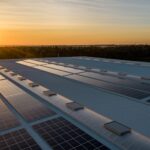The need for quality, well-organized, and efficient farming is on the rise. Threats of food shortages are spreading all around the globe, which makes farming using technology a great business model. There are many accessible financing options to get started, along with plenty of resources to help you move forward with creating your own aquaponics farm. Read more to learn how to get started with your own farming operation.
Aquaponics growing systems can require a sizable upfront investment, but they will produce quick earnings. The most sizable expense for your aquaponics operation will be energy production for cooling, lighting, heating, and water circulation with pumps. Your business will also require vehicles, freezers, computers, and other facilities (Fruscella et al., 2021).
The cost can be reduced by utilizing natural sunlight, harvesting technologies, and localized renewable energy resources. There is always the need for the monitoring and control of essential parameters including ultraviolet lights, diseases, pest management, control of temperature, nutrients, salts, electrical conductivity (EC), and pH (Susanti et al., 2022).
An aquaponic system installed on one acre of covered, flat, and leveled land can earn $300,000 USD per year. The operational cost for one-time installation is about 1.2 million USD so you will become profitable within five years. Although every investor’s situation is different, the initial investment is important for greater yields.
Cost of Components for Small Scale Aquaponic Farming (based on Spring 2022 prices)
| Name of Item | Item Quantity | Cost |
| Nutrients | 1 | $40 |
| Air pump for backup | 1 | $32 |
| Fish food | 1 | $35 |
| Uniseals | 10 | $32 |
| Water testing kit | 1 | $23 |
| Biofiltration media | 300 | $40 |
| ½ inches PVC piping | 5 | $30 |
| 1 ½ inches PVC piping | 5 | $14 |
| PVC ball valves | 1 | $19 |
| Plant holders | 1 | $9 |
| Net cups | 1 | $13 |
| Air stones | 2 | $10 |
| Air Pump | 1 | $38 |
| Water pump | 1 | $27 |
| Plant seedlings | 1 | $65 |
| Fish | 25 | $135 |
| Planting area | 1 | $100 |
| Biofilter | 1 | $90 |
| Mechanical filter | 1 | $180 |
| Fish tank | 1 | $430 |
| Sump tank | 1 | $65 |
| $1427 |
For businesses in the US, there are US financing options, grants.gov, SARE (SARE is Sustainable Agriculture Research and Education program), angel investors, USDA, and Farmers Veteran Coalition. There are plenty of groups providing financing if you have the time to do the research and paperwork. Local universities are also getting involved in aquaponics. SARE is a great place to start; this is a collision of a number of universities across the country that make free information and classes available to help farmers get started with their own operations.
For investors and farmers in the EU, investigate what the Netherlands has going on, as they are setting a great example in this ground-breaking agricultural arena. Some research will provide the details of how to earn grants, or special loans.


Challenges
Of course, as with any business, there are some potential challenges associated with successful installation, monitoring, management, and harvesting (Junge et al., 2017). It’s important to be aware of these details as you consider your best path forward.
The aquaponics system is cyclical, with a focus on fish growing in tanks that produce feces with a variable nutrient profile and concentration to fertilize the plants being grown. Although these nutrients are required by the plants, their composition and nature are different from well-treated organic nutrients and synthetic chemicals. This means that the introduction of the right microorganisms is required to convert the nutrients from feces to plant-useable forms (Yep and Zheng, 2019).
The growth and expansion of pathogenic populations is also a major concern for aquaponics production. Farmers must monitor the pathogens with routine testing or pathogens can lead to potential toxicity and contamination. The fecal elements of fish and unused food particles can also cause system blockages and improper nutrient and water flow (Zhou et al., 2022).

Regular cleaning and management of the tanks and setup are required to get the best results. Aquaponic systems are infrastructure and energy-intensive with a lot of moving parts that all need to be maintained. The cost of energy can also be quite high, although in most places it can be supplemented with the use of renewable energy sources. However, thermal desalination and thermal heating sources may not be economically feasible for all the regions around the globe (Breitenstein and Hicks, 2022).
There are also some social challenges associated with the use of aquaponics production systems as independent aquaponic systems are much more efficient than the traditional one loop systems. Optimizing the growth of both fish and plants is also a major challenge for efficiency and profitability (Goddek et al., 2015). The use of the integrated management approaches, skills, and financial support is required to overcome the challenges on a sustainable basis.
Overall, despite the challenges and details outlined here, aquaponics can be a very lucrative business, and because of its sustainable nature, it’s a great way to get into agriculture for the future well-being of our planet. Read more about aquaponics and find references here: An Investor’s Guide to Aquaponics. This post was based on the investor’s guide with a few bonuses from a friend who’s been running aquaponics farms in Florida and Africa for a very long time. There are a lot of resources out there to get the help you need to successfully launch and sustain this type of farm, but it takes time to education yourself. If you have a passion for farming and really like this method, then right now is a great time to get started. Don’t be afraid to do your own research, reach out to others who are successfully farming to ask questions, or seek out the helpful programs we’ve listed above. Subscribe for more business, sales, and investing posts. Have a lovely day!











